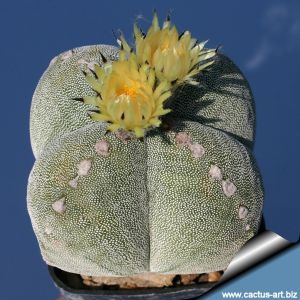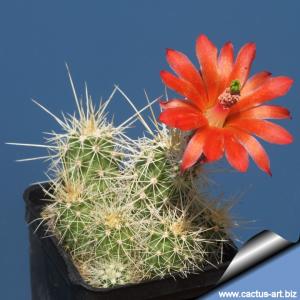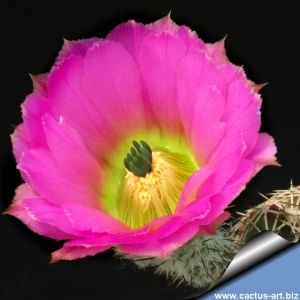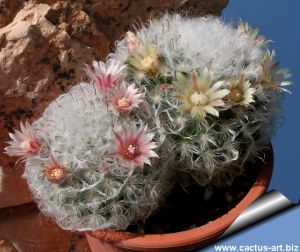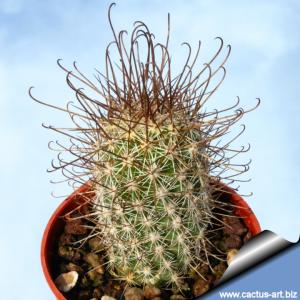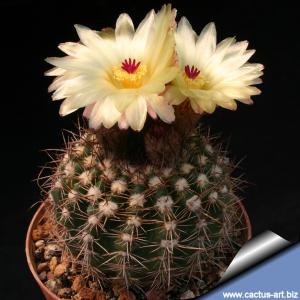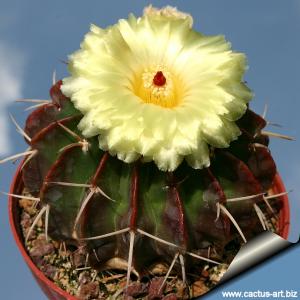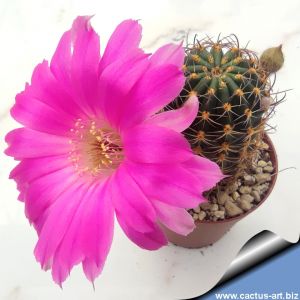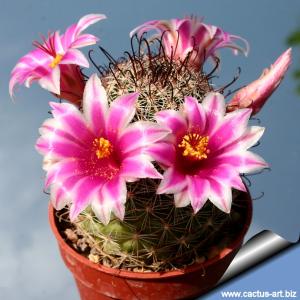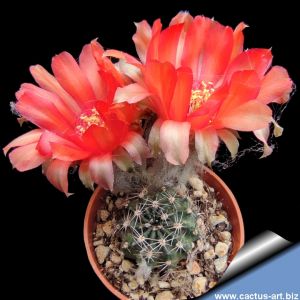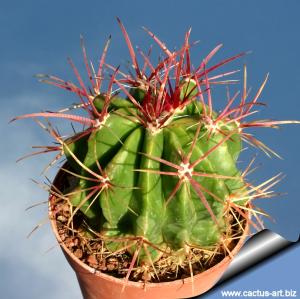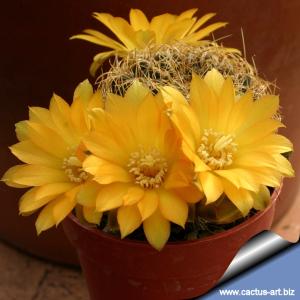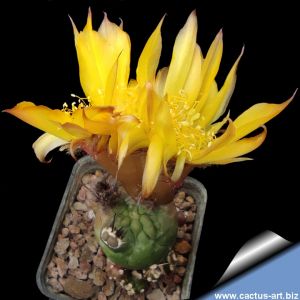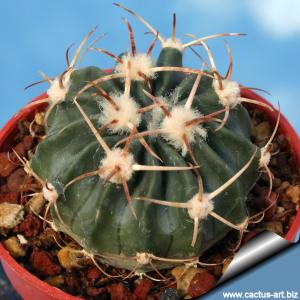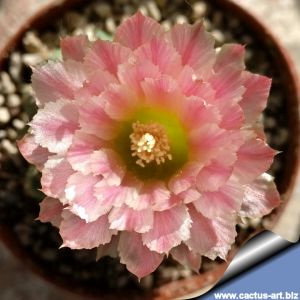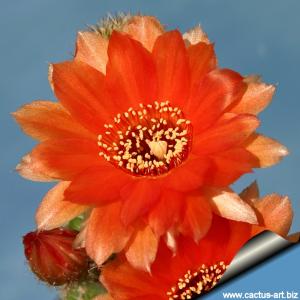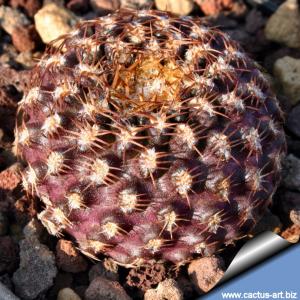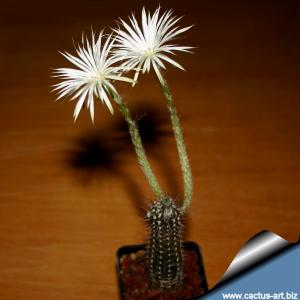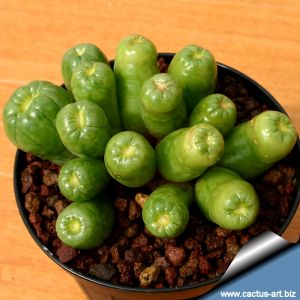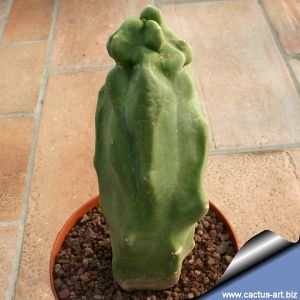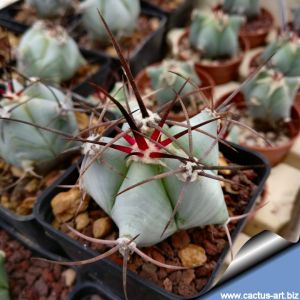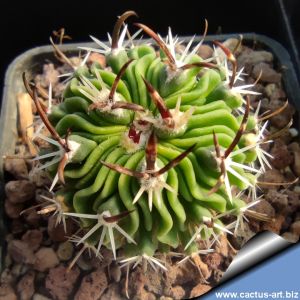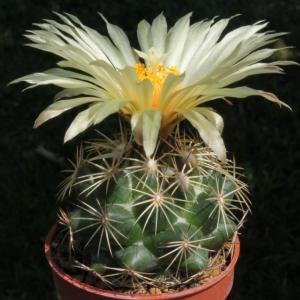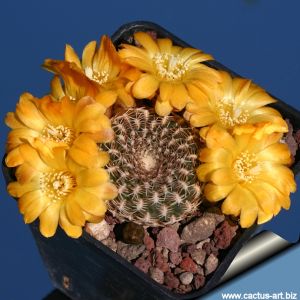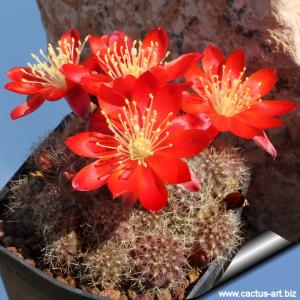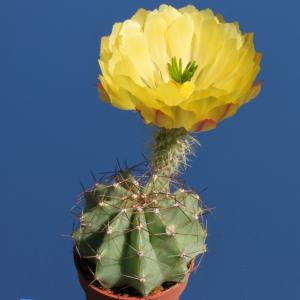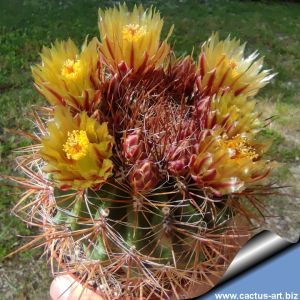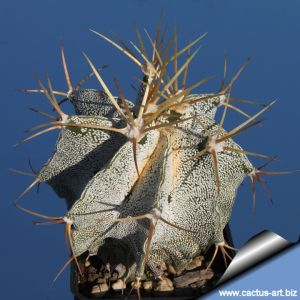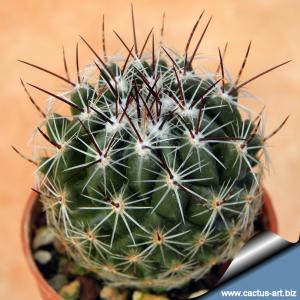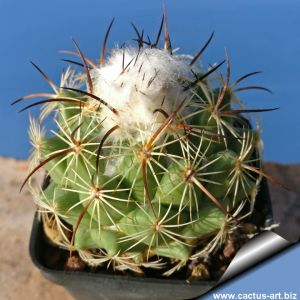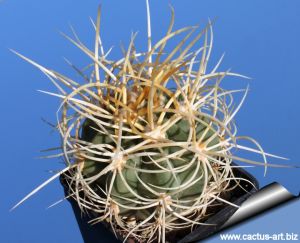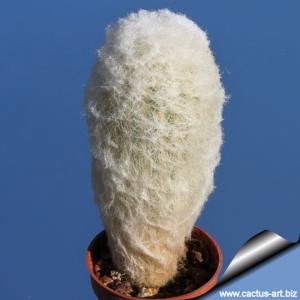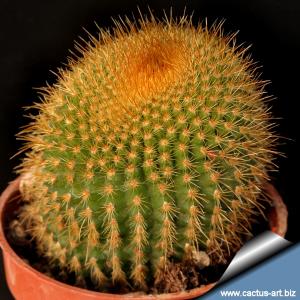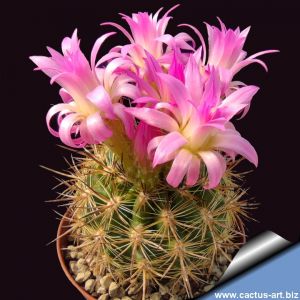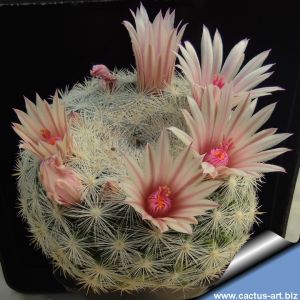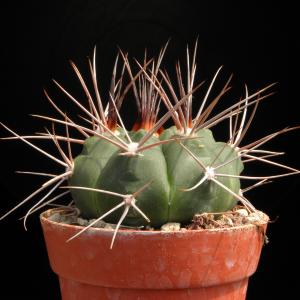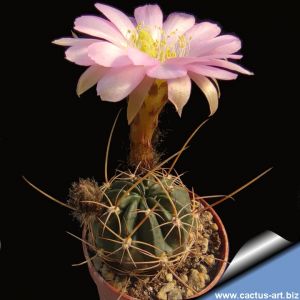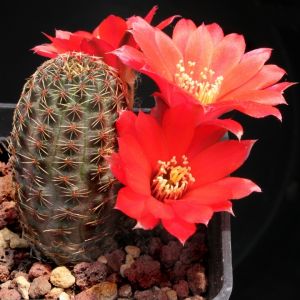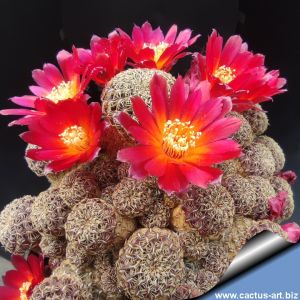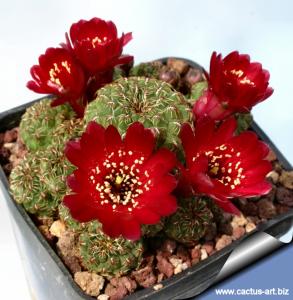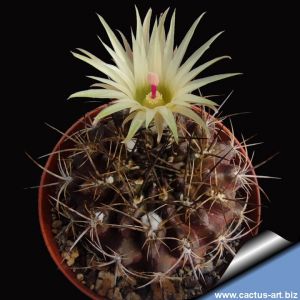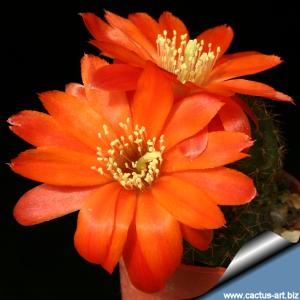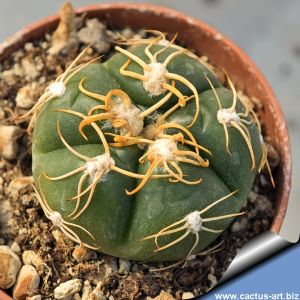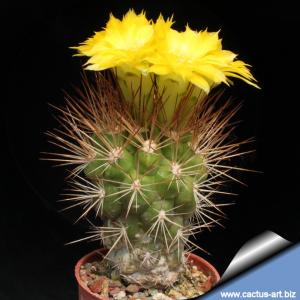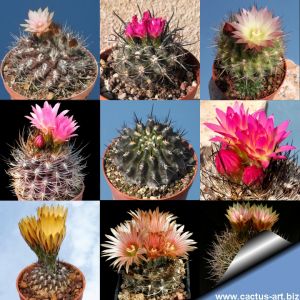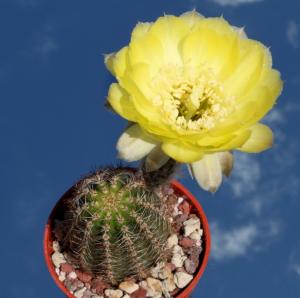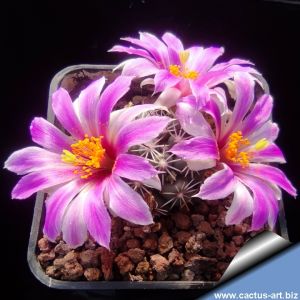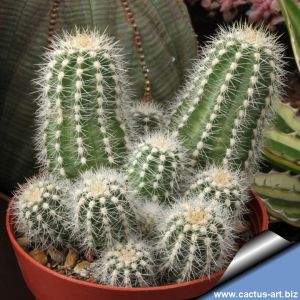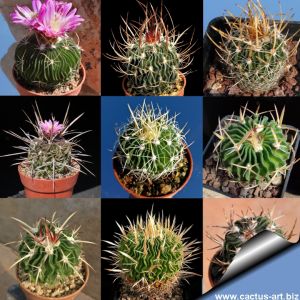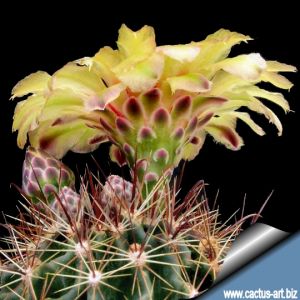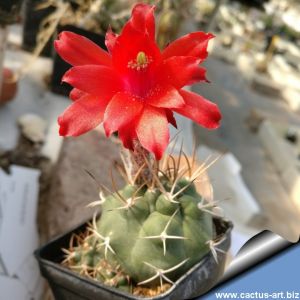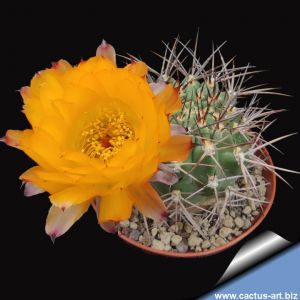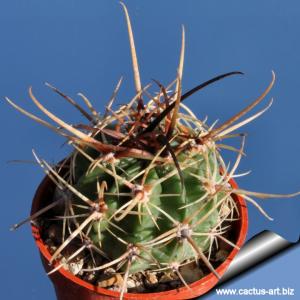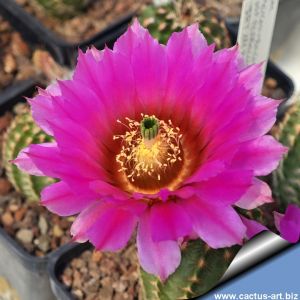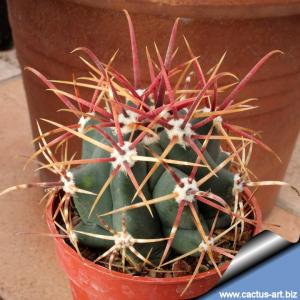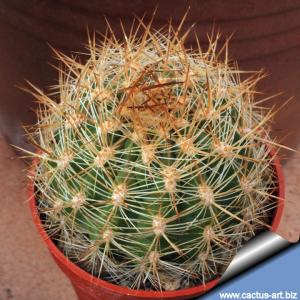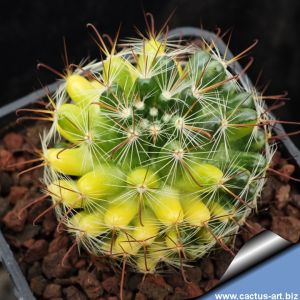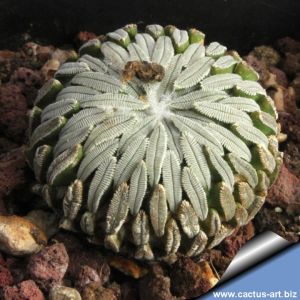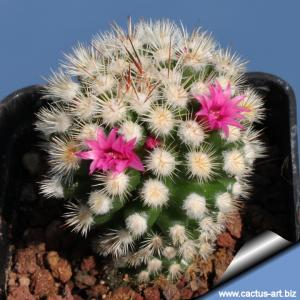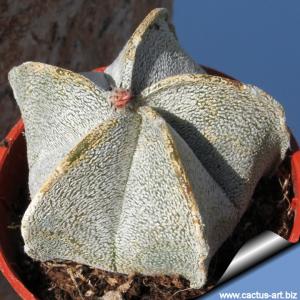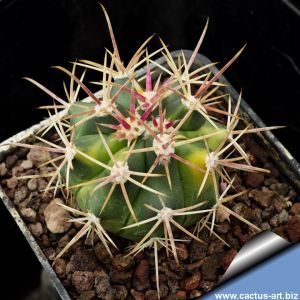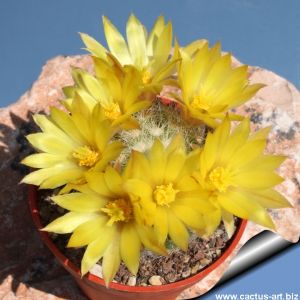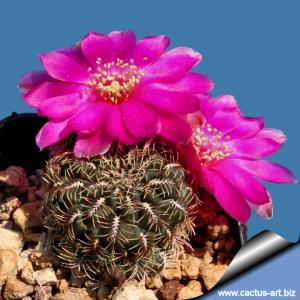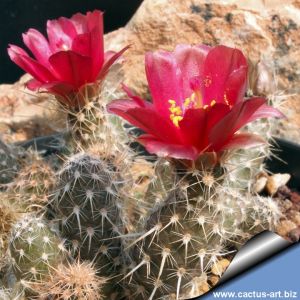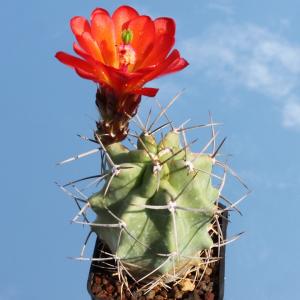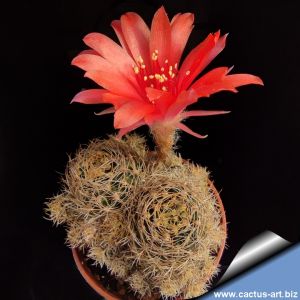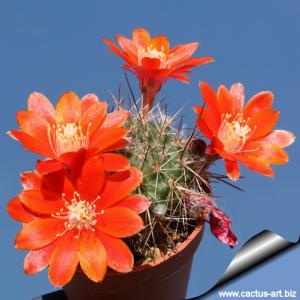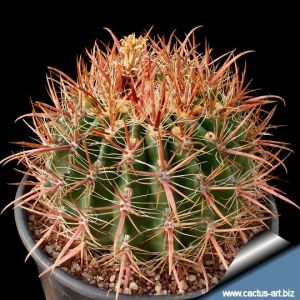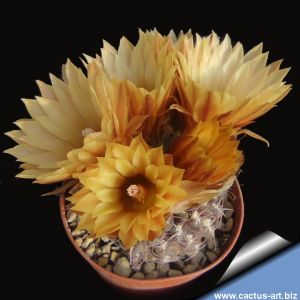-
1
A beautiful and distinctive plant: A. myriostigma quadricostatum differs from the typical, more common form by having four ribs instead of five.
-
2
-
3
Outstanding and incomparable. The flowers have a shocking yellow-green throat surrounded by a contrasting fuchsia corolla. The inner yellow is like the phosphorescent colour of some pen marker or even more luminescent.
-
4
M. bocasana var multilanata has round soft stems with an extreme abundance of white woolly hairs and short hooked central spines. The flowers are numerous, large, yellow and pink.
-
5
-
6
Nice solitary, or slowly clustering, flattened ball-shaped cactus. It has expressive shining yellow flowers.
-
7
The stems are flattened globular, measuring up to 15 cm in diameter, initially spiny and gradually becoming more woolly. In mid-summer, multiple glossy yellow flowers bloom around the densely woolly stem apex.
-
8
Really a beautiful plant.
-
9
Flowers are very showy, light purplish-pink with a pinkish brown midstripe and paler margins, about 20-30 mm in diameter. The fruit are club shaped, pale scarlet 25-30 mm long.
-
10
-
11
-
12
-
13
Own root plants, flowering size (Not grafted). It has almost spineless ovoidal stems that branches profusely and grow up to 30 cm tall. It is a heavy bloomer that start flowering when still very young and small.
-
14
Named for the State of Texas where it is widely distributed. it is a round-shaped barrel with numerous flat ribs that grows very low to the ground with short but very thick pink or grey spines that can live for decades.
-
15
The forma "viridis" is very similar to the standard species only differs for the stem colour which is a bright grass green and not a dark tannish-brown. Very nice!
-
16
-
17
Frailea cataphracta has 10 to15 low and broad ribs. The tubercles are dull green and flatted above, with a purple-brown lunate (moon shaped) blots situated below the areoles. It is undoubtedly one of the most fascinating cacti.
-
18
It is a beautiful small geophytic cactus with a dark purple body and very short pectinated spines. The flowers are born on young areoles, and are very attractive, shining orangish with darker midline.
-
19
This tiny plant is one of the most fascinating and showy cacti! Flowers are of a superlative beauty, opening in the moonlight on a summer night and lasting for only till dawn, but a number are produced in succession.
-
20
Fred is one of the most famous and bizarre monstrous cactus cultivars, forming soft, rubbery globes in green and pink. It’s a spontaneous mutation, likely originated from a normal Mammillaria bocasana.
-
21
-
22
-
23
Solitary stem yellowish-green to dark olive-green. Ribs are very regularly and attractively wavy. Radial spines 4–6, glassy-white; central spines 3, strongly flattened, brownish-purple, upright, with one distinctly longer.
-
24
Coryphantha palmeri is a globose cactus with usually one stout hooked central spine. It is one of those Coryphanthas which pass a purely radial-spined long youth stage. After several years they develop the central spines. It is extremely variable.
-
25
Sulcorebutia arenacea, is a choice solitary, user-friendly cactus, with perfectly neat, symmetrical spination and profuse yellowish-orange (or rarely magenta) flowers. The spines are pectinate and held so tightly that give a sandy effect.
-
26
-
27
Greyish-green body, rather short greyish spines, many yellow flowers.
-
28
F. viridescens subs. littoralis is a solitary barrel cactus wider than tall. The spines are dense, pink or yellowish, becoming duller by age or turning yellow or horn-colored. The flowers are greenish yellow or golden-yellow with brownish midstripes.
-
29
Nearly all-white body covered in a dense scattering of white dots, producing a glowing appearance. Vivid yellow blooms contrast dramatically against the pure white surface.
-
30
-
31
It is dimorphic: juveniles have short tubercles and only radial spines, but mature plants develop strong central spines and elongated tubercles. This transformation gives the plant its distinctive pineapple-like adult appearance.
-
32
The Diamantina population is distinguished by robust light, cream or amber colored thorns.
-
33
E. nana (= E. melanostele subsp. nana) is a columnar cactus densely covered with white hair distinguished from the standard E. melanostele for its smaller stems and the wool on the cephallum is white to pale yellow (mostly yellow-brown in E. melanostele).
-
34
Occasionally specimens with variegated bodies appear among the seedlings of normal plants. These are selected and preserved for their variegation. Each different.
-
35
Nice brown-spined variant of Notocactus leninghausii. It is distinguished by its harmless amber to brownish-red spines and golden flowers.
-
36
An extremely variable species with bicoloured flowers: petal tips are magenta-violet, while the throat is greenish-white, creating an almost fluorescent contrast. Spines vary greatly between plants, ranging from creamy yellow to dark grey-brown.
-
37
Mammilloydia candida called 'Snowball' is a choice cactus with a so dense snowy white, spination, that its body appears hidden by spines. Mammilloydia are clearly related to the genus Mammillaria, but it is usually recognized as a segregate genera.
-
38
-
39
Long spines, irregularly curved or contorted, differing in color and length—sometimes reaching 20 cm. Polychromatic blooms: white, yellow, orange, pink, or red.
-
40
-
41
Striking bicolored blooms—vivid magenta with an orange throat. Adorned with minute beige comb-like spines. Charming.
-
42
-
43
Geophytic cactus with solitary stems rising barely above ground level, dull dark green, in the sun often tinged with purple. Spines variable, tannish-brown, dull grey or black, straight to curved. Flowers creamy-white to pink.
-
44
The showy orange flowers of this specie are among the largest of the genus Rebutia.
-
45
Striking and characteristic form with a flat, rounded body and just five wide ribs. The prominent white areoles bear yellow, more or less curled spines, arranged like little spider legs. This delicate, web-like pattern creates a unique visual appeal.
-
46
Fusto verde-giallastro con tubercoli rotondi disposti a spirale. Areole grandi e chiare. Spine numerose, aghiformi, intrecciate, lunghe fino a 5 cm, color paglia-marrone. Fiori giallo-aranciati vicino all'apice.
-
47
-
48
A mix of Eriosyce from the Neoporteria group, assorted with various species and seed-grown hybrids. Each plant is one-of-a-kind, featuring unique shapes, spination, and flower colors.
-
49
-
50
Small-sized, with a body ranging from grey-white to bluish-green, hooked spines, and striking pink flowers.
-
51
This is a dwarf form of trichocereus that branches profusely from the base. It can form large mounds with dozens of branches in a few years. Reminiscent of a great chamaecereus silvestris. Beautiful and easy to grow.
-
52
Mix of Echinofossulocactus (Stenocactus), assorted with various species and seed-grown hybrids. Each plant is one-of-a-kind, featuring unique shapes, spination, and flower colors.
-
53
Hamatocactus setispinus is a well known cactus species that produce a succession of large silky yellow flowers in summer and autumn. Thelocactus setispinus flowers have red centers.
-
54
Very free flowering. Beautiful.
-
55
The minuta variety is distinguished by its long, robust spines and magnificent yellow flowers,
though occasional orange or red blooms may occur.
-
56
-
57
Chunky semi-clumping stems in different spine colors, with nice magenta flowers. Winter hardy/Winterhart.
-
58
-
59
Globular body flattened at apex with ribs broken into hexagonal tubercles and many needle-like amber spines. The flowers are narrow, reddish-orange, slim-tubed, either straight or gently oblique, sometimes showing slight zygomorphy.
-
60
# # # PIANTA SPECIALE # # # (Esemplare selezionato) Diametro 4,5-5 cm. This is a seed grown specimen, only this one available!
-
61
Pelecyphora aselliformis, commonly known as the "Hatchet Cactus", is one of the most iconic cacti, renowned for its uniquely shaped stem. The pectinate spines resemble woodlice or sowbugs (Oniscus asellus), which inspired the species name.
-
62
Striking and unusual cactus with large, woolly areoles densely packed with tiny straight spines radiating in all directions. Spines are white or slightly yellowish-red-tipped on new growth, creating a vivid, bristly appearance.
-
63
Astrophytum coahuilense with five ribs, has a surprising similarity to Astrophytum myriostigma. However, it is different in all characteristics regarding flower, fruit and seed. Flowers are yellow with a red center (like those of Astrophytum capricorne).
-
64
# # # PIANTA SPECIALE # # # (Esemplare selezionato) diam. 5 cm. This is a seed grown specimen, only this one available!
-
65
Soft white spines, rather large yellow flowers with a lemon scent. This rare combination of delicate texture and strong citrus fragrance makes it a standout. A visually and olfactorily appealing cactus.
-
66
An Andean jewel! It boasts elongated white areoles and fishbone spines that look embroidered. When blooming, it bursts with purple or red flowers with a white heart. A highly decorative species, prized for its geometric structure and vibrant blooms.
-
67
Geophytic cactus with a long swollen roots and deciduous, spreading or erect branches somewhat resembling Opuntia whipplei. Diurnal flowers in yellow, yellow-copper, brownish, or dull purple, with a red stigma.
-
68
-
69
-
70
Robustispina" delivers: remarkably sturdy spines. The globose body sports outward-facing white-brown radials and elongated dark centrals, while orange-red blooms provide fiery contrast.
-
71
-
72

